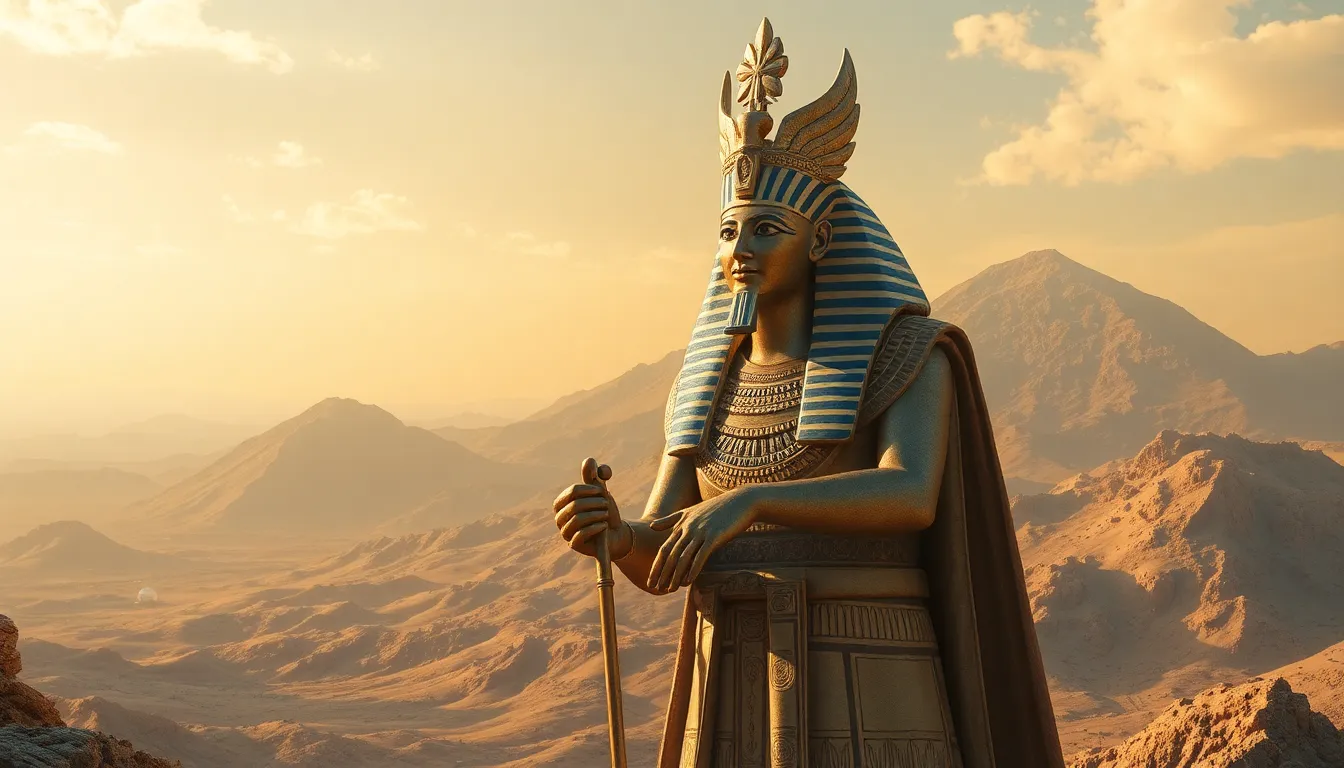The Spiritual Teachings of the God Geb
I. Introduction to Geb: The Earth God in Ancient Egyptian Mythology
In ancient Egyptian mythology, Geb is revered as the god of the earth, embodying the land that sustains life. His significance in Egyptian cosmology is profound, as he represents not only the physical earth but also the vital energies that promote growth and fertility. Geb is often depicted lying on the ground, with his body covered in green vegetation, symbolizing the bountiful earth.
Geb’s relationship with other deities is integral to understanding his role in the pantheon. He is the son of the sky goddess Nut and the air god Shu, embodying the space between the earth and the heavens. This familial connection emphasizes the balance between the different elements of the universe, showcasing the interconnectedness of all life.
II. Geb’s Symbolism: The Earth and Fertility
Geb’s primary symbolism revolves around the earth and its inherent fertility. As the god of the earth, he is directly associated with agriculture, which was vital for the survival of the Egyptian people. The annual flooding of the Nile River, which deposited nutrient-rich silt on the land, was seen as a gift from Geb, enabling the Egyptians to cultivate crops and sustain their civilization.
- Fertility: Geb is often called upon to bless the land and promote agricultural abundance.
- Harvest Rituals: Farmers would invoke Geb during planting and harvesting seasons, seeking his favor for a fruitful yield.
- Symbol of Growth: His image often appears in tomb paintings, emphasizing the importance of the earth’s fertility in the afterlife.
III. The Spiritual Role of Geb in the Afterlife
In addition to his role as the earth god, Geb holds a significant position in the judgment of souls and the afterlife. Ancient Egyptians believed that after death, the soul would face the weighing of the heart ceremony, where the heart of the deceased was weighed against the feather of Ma’at, the goddess of truth and justice. Geb’s role in this process is crucial, as he is often depicted as the judge who oversees this important transition.
Mythology surrounding Geb’s connection to the underworld emphasizes his role as a protector of the dead. He is seen as a guardian of the earth, ensuring that the deceased are returned to the earth from which they came, thus facilitating their resurrection and rebirth in the afterlife.
IV. Geb’s Teachings on Balance and Harmony
One of the core teachings associated with Geb is the concept of Ma’at, which embodies balance, order, and harmony in the universe. This principle is vital in understanding Geb’s teachings, as he represents the equilibrium between earth and sky. Geb’s existence exemplifies the need for balance in all aspects of life, reminding us that the natural world operates best when all elements are in harmony.
- Balance in Nature: Geb teaches that both the earth and sky must coexist harmoniously for life to flourish.
- Personal Balance: Individuals are encouraged to seek balance in their own lives, mirroring the relationship between Geb and Nut.
- Environmental Harmony: Geb’s teachings resonate with the importance of respecting and nurturing the earth to maintain ecological balance.
V. Rituals and Worship Practices Dedicated to Geb
Ancient Egyptians engaged in various rituals to honor Geb, reflecting their deep reverence for the earth. These practices often included offerings of food and drink, as well as prayers for fertility and prosperity. Sacred sites, such as temples and shrines dedicated to Geb, served as focal points for worship and community gatherings.
Festivals associated with Geb were celebrated during the planting and harvesting seasons, marked by communal feasts and agricultural rites. These events served to strengthen the bond between the people and their land, fostering a sense of gratitude and connection to Geb as the source of their sustenance.
VI. Geb’s Influence on Modern Spirituality
Geb’s teachings continue to resonate in contemporary spirituality, particularly within modern paganism and earth-based religions. Many individuals draw inspiration from Geb’s association with the earth, recognizing the importance of nature in their spiritual practices. This connection is often expressed through rituals that honor the changing seasons and the cycles of life.
- Nature Worship: Modern practitioners often emphasize the sacredness of the earth, echoing Geb’s teachings.
- Environmental Activism: Inspired by Geb’s role as the earth god, many engage in efforts to protect and preserve the environment.
- Mindfulness Practices: Spiritual seekers incorporate grounding techniques that reflect Geb’s teachings on balance and harmony.
VII. Interpreting Geb’s Teachings for Personal Growth
Individuals seeking personal growth can draw from Geb’s spiritual principles in their daily lives. By fostering a connection with the earth and embracing the concept of balance, one can cultivate a deeper understanding of themselves and their place in the world.
Practical applications of Geb’s teachings might include:
- Nature Walks: Engaging with nature through walks or hikes can enhance one’s appreciation for the earth.
- Meditation: Meditative practices focused on grounding oneself can help individuals find inner peace and balance.
- Journaling: Reflecting on personal experiences in relation to nature can foster growth and understanding.
VIII. Conclusion: The Legacy of Geb’s Spiritual Teachings
In summary, Geb’s enduring impact on spirituality and culture is evident in both ancient practices and modern interpretations. His teachings encourage a profound connection with the earth, emphasizing the importance of balance and harmony in all aspects of life. As we continue to explore and embrace Geb’s spiritual legacy, we are reminded of the vital relationship between humanity and the natural world, inspiring us to honor and protect the earth that sustains us.




